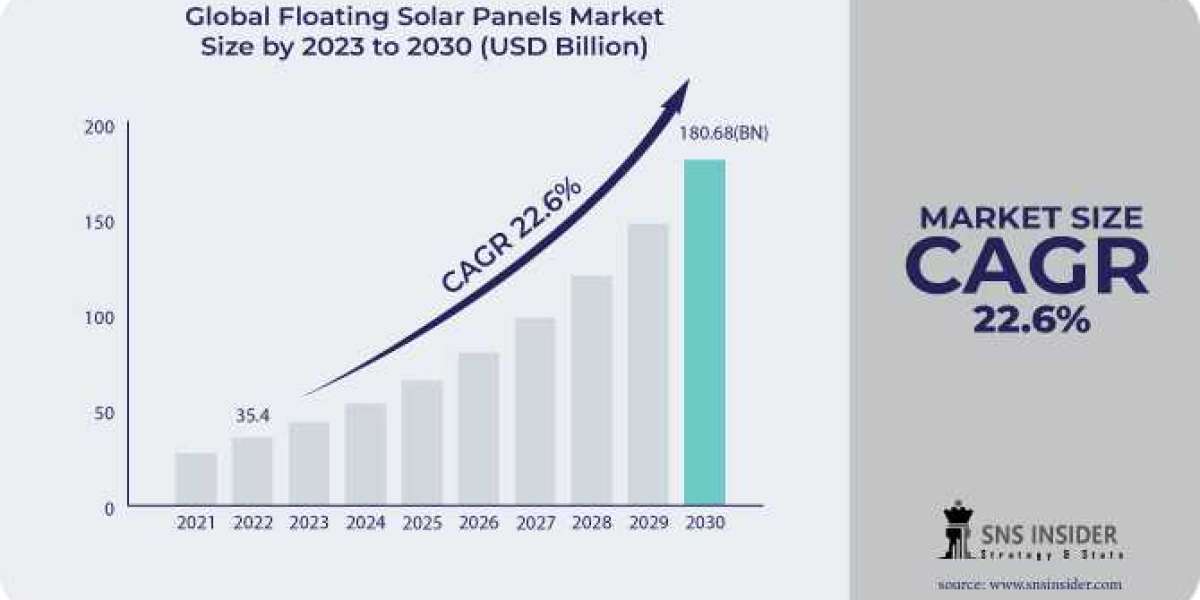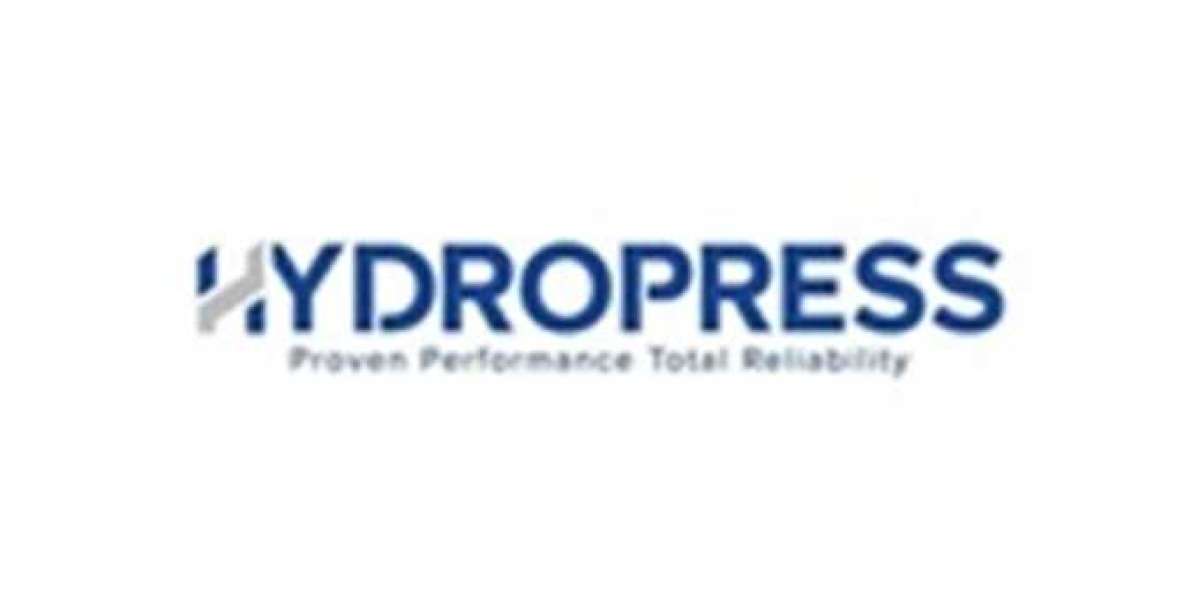The Floating Solar Panels Market size was valued at USD 44.08 billion in 2023 and is expected to grow to USD 227.91 billion by 2031 and grow at a CAGR of 22.8% over the forecast period of 2024–2031.
Market Overview
Floating solar panels, also known as floatovoltaics, are a form of solar energy technology that utilizes floating platforms to support solar photovoltaic (PV) panels on bodies of water. This technology has gained attention due to its ability to maximize solar energy generation while conserving land space for agriculture or urban development. As demand for clean and renewable energy grows globally, floating solar panels offer a viable solution for increasing solar power generation, especially in water-scarce and land-scarce regions.
The market for floating solar panels is poised for rapid expansion, thanks to technological advancements, falling costs of solar panels, and supportive government policies aimed at promoting renewable energy adoption. Floating solar installations can also provide additional benefits, such as improving water quality by reducing algae growth and helping cool the panels, which increases their efficiency.
Key Market Segmentation
The Floating Solar Panels Market is segmented by capacity, type, panel type, and region.
By Capacity
- Up to 500 kW: This category includes small-scale floating solar installations, primarily used in residential or small commercial applications. These systems are ideal for reservoirs, ponds, or small lakes, offering an affordable and compact solution to power localized areas.
- 500 kW to 1 MW: These mid-sized systems cater to community-level applications and are often installed in medium-sized water bodies, offering a balance of cost-effectiveness and scalability.
- 1 MW to 3 MW: Larger floating solar systems are designed for industrial, agricultural, or commercial facilities. These systems are increasingly deployed in large water reservoirs or artificial lakes, where there is sufficient space to accommodate the panels.
- Greater than 3 MW: These are large-scale floating solar farms, which are typically used to generate substantial amounts of electricity for distribution to the grid or for large-scale industrial operations. These installations are being deployed in large bodies of water such as lakes, seas, and reservoirs, with high energy demands.
By Type
- Stationary Floating Solar Panel: Stationary floating solar panels are fixed in place on the water body and do not track the sun. These systems are cost-effective, simpler to install, and suitable for applications where the sun’s position is relatively constant or less variable throughout the day. Stationary panels are the most common type used in floating solar installations.
- Tracking Floating Solar Panel: These floating systems are equipped with tracking mechanisms that allow the panels to follow the sun’s movement across the sky. Tracking solar panels can improve energy efficiency by maximizing sunlight exposure throughout the day. Although they are more expensive to install and maintain, they offer higher energy output, making them ideal for large-scale applications.
By Panel Type
- Mono-crystalline: Mono-crystalline panels are known for their high efficiency and longevity. They are made from a single continuous crystal structure, which allows them to generate more power from the same amount of sunlight. These panels are often used in floating solar installations where maximizing power output is a priority.
- Poly-crystalline: Poly-crystalline panels are made from silicon crystals that are melted together. While slightly less efficient than mono-crystalline panels, they are more affordable, making them a popular choice for larger installations where cost savings are crucial.
- Thin Film: Thin film panels are lightweight and flexible, making them ideal for floating applications where weight and durability are important considerations. While they typically have lower efficiency than mono and poly-crystalline panels, they are well-suited for large-scale applications where space is not as constrained.
By Region
- Asia Pacific (APAC): The Asia Pacific region is expected to dominate the floating solar panels market, driven by countries like China, India, and Japan, which have large water bodies and increasing demand for renewable energy. Governments in this region are heavily investing in floating solar technologies to meet their renewable energy targets and mitigate the impact of climate change.
- Europe: Europe is also witnessing significant growth in the floating solar panels market, particularly in countries like France, the UK, and Spain, which are deploying floating solar farms to complement their existing solar infrastructure. The European Union’s commitment to achieving carbon neutrality by 2050 is expected to further drive demand.
- North America: The United States and Canada are emerging markets for floating solar technology, particularly for large-scale installations in lakes and reservoirs. The growing adoption of renewable energy policies and incentives is supporting the market’s growth in North America.
- Middle East Africa (MEA): The Middle East and Africa region is exploring floating solar panel installations in its vast desert regions and water-scarce areas. While the market in this region is still developing, the potential for growth is significant, especially with the push towards renewable energy and energy security.
- Latin America: Countries in Latin America, such as Brazil and Chile, are beginning to invest in floating solar projects as part of their broader renewable energy strategies. With abundant water bodies and a growing emphasis on clean energy, the Latin American market is expected to see robust growth.
Market Drivers and Trends
- Increasing Demand for Renewable Energy: The global shift towards renewable energy is one of the key factors driving the growth of the floating solar panels market. Floating solar technology offers a unique solution to address land scarcity issues while contributing to cleaner energy production.
- Rising Land Scarcity: As urban areas expand and agricultural land becomes increasingly scarce, floating solar panels offer a viable alternative to traditional land-based solar installations, utilizing underused water bodies like reservoirs and lakes.
- Government Policies and Incentives: Supportive government policies, including financial incentives, subsidies, and tax credits for renewable energy projects, are helping drive the adoption of floating solar panels. Additionally, regulatory frameworks for offshore and water-based installations are encouraging investment.
- Technological Advancements: Innovations in solar panel efficiency, floating platform designs, and tracking mechanisms are improving the performance and cost-effectiveness of floating solar systems. These advancements are making floating solar panels a more attractive option for both small-scale and large-scale installations.
- Environmental Benefits: Floating solar panels can help reduce evaporation from water bodies, improve water quality, and prevent algae growth, offering additional environmental benefits beyond clean energy production.
Conclusion
The Floating Solar Panels Market is poised for significant growth from 2024 to 2031, driven by technological advancements, increasing demand for renewable energy, and the need for innovative solutions to address land scarcity and environmental concerns. With substantial opportunities across various regions, floating solar technology is expected to play a key role in the future of global energy generation.
Read Complete Report Details of Floating Solar Panels Market 2024–2031@ https://www.snsinsider.com/reports/floating-solar-panels-market-3312
About the Report
This comprehensive market research report provides insights into the Global Floating Solar Panels Market, highlighting key trends, technological advancements, regional opportunities, and forecasts for the next decade. It serves as an essential resource for stakeholders seeking to capitalize on the growth of this promising sector.
About Us:
SNS Insider is a global leader in market research and consulting, shaping the future of the industry. Our mission is to empower clients with the insights they need to thrive in dynamic environments. Utilizing advanced methodologies such as surveys, video interviews, and focus groups, we provide up-to-date, accurate market intelligence and consumer insights, ensuring you make confident, informed decisions.
Contact Us:
Akash Anand — Head of Business Development Strategy
info@snsinsider.com
Phone: +1–415–230–0044 (US) | +91–7798602273 (IND)











